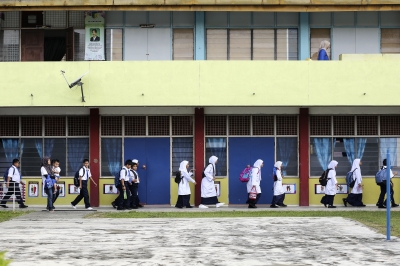KUALA LUMPUR, Oct 1 — Adolescent birth rates for girls aged 15 to 19 have decreased from 41 to 35 per 1,000 between 2015 and 2024 in South-east Asia, the Asean Gender Outlook 2024 revealed.
The report found that delaying the age at which young women deliver their first child is important, as it prevents them from dropping out of school, facilitates their career advancement, supports their overall health and builds their agency vis-à-vis their intimate partner.
It also identified several key factors associated with lower adolescent birth rates, including delaying the age of first marriage, access to contraceptives, affordable safe abortions and education opportunities.
The availability of infrastructure, such as schools, health facilities and transportation, supports these key factors which contribute to lower adolescent birth rates.
Across the Asean region, investments in infrastructure have been shown to encourage education completion rates at all levels since 2015.
“More and more young women are completing upper secondary education, a critical period for them to learn about reproductive health and build their chances of accessing better paid jobs later in life,” the report noted.
While Thailand and Vietnam have experienced the fastest growth among countries making progress, Malaysia stands out in the Asean region with its substantial investments in education — exceeding US$14 million (RM58.3 million) annually and representing a significant percentage of its gross domestic product (GDP).
However, the report warns of a downward trend in investments over recent years, which could jeopardise these gains, particularly in rural areas where the availability and quality of educational infrastructure remain inadequate.
The report cautioned that inadequate education infrastructure significantly hampers rural girls’ ability to complete their schooling, thereby raising their risk of teenage pregnancy.
Citing Vietnam as an example, teenage pregnancy rates in 2002 stood at 7 per cent for those who completed primary education but dropped to less than 1 per cent for those who completed secondary education.
In-line with the availability of infrastructure, teenage pregnancy rates in rural areas were more than double the rate in urban areas.
In Cambodia, statistics from 2022 revealed that 32 per cent of teenagers without any education were mothers, compared to 14 per cent among those who completed only primary education and just 5 per cent for those who finished secondary school. Rural girls faced an even greater risk, with a pregnancy rate of 7.5 per cent before age 20, compared to 5.2 per cent in urban areas.
The report noted, “In both countries, education infrastructure in urban areas was far superior to that of rural areas”, highlighting the disparity that impacts young women’s opportunities and health outcomes.
The report pointed out that having a school within walkable distance that includes basic facilities such as electricity, running water and adequate toilets, encourages teenage girls to stay in school.
This is especially crucial during menstruation, as proper sanitation infrastructure — such as improved, usable, and single-sex toilet facilities — is a key prerequisite for their hygiene and safety.
“Across the Asean region, basic water infrastructure is available in almost every school in Singapore and Thailand, but only in 68 per cent of schools in Vietnam and 49 per cent in the Lao People’s Democratic Republic,” the report stated.
In Cambodia, these facilities exist in 89 per cent of the schools in urban areas compared to 85 per cent of rural schools.
Similarly, basic sanitation facilities are widely available in schools in Malaysia, but only in 32 per cent of schools in the Lao People’s Democratic Republic.
In Cambodia, 42 per cent of urban schools have basic sanitation facilities, but in rural areas only 36 per cent of schools have basic sanitation.
The data above has been collected through a collaborative effort and partnership of the Association of Southeast Asian Nations (Asean), Asean Committee on Women (ACW), Asean Secretariat and the United Nations Entity for Gender Equality and the Empowerment of Women (UN Women).

